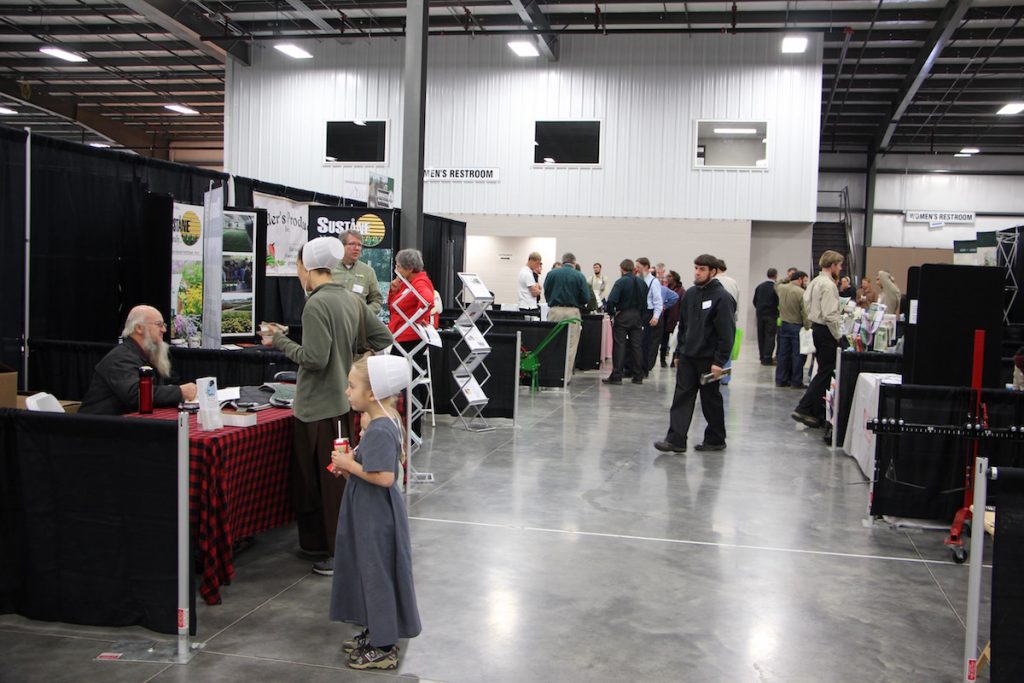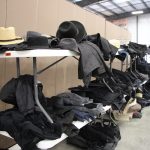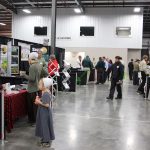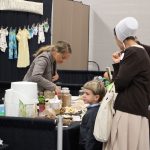
(Scroll down for gallery)
MOUNT HOPE, Ohio — Keeping the next generation interested in agriculture and having a thriving farm to pass on to them was a recurring theme at the Organic Farming Conference in Mount Hope.
“The conference is an opportunity for farmers seeking new information on organics and to learn from each other,” said Ernest Martin, part of the conference planning committee. “We’re not looking to be the biggest organic conference, but just be good.”
Just under 500 organic growers and enthusiasts were registered for the conference Nov. 10-11 at the Mount Hope Event Center.
Next generation
Jerry Miller, a dairy farmer from Millersburg, was the keynote speaker at the opening session of the conference. He shared the importance of building a strong organic community, being transparent with consumers and keeping the next generation on the farm.
“Somehow, we will have to romanticize the next generation into farming,” said Miller, who milks 55 head of Jersey crosses on his farm, Rolling Ridge Meadows.
“We need to get the best and brightest into farming.” Miller said it’s important to have a thriving and sustainable farm for the next generation to want to continue farming.
“It’s very humbling to see the next generation go on and have success,” said Ervin Weaver, a dairy farmer from Dalton, whose son successfully manages the family farm.
The first official load of organic milk left Weaver’s farm in 2007 and he said it’s the best thing he ever did. Milking only 28 head on his dairy, Weaver knew he had to find a niche market because he wasn’t going to be able to compete with larger dairies.
Henry Wengerd Jr., of Mount Eaton, echoed those sentiments. Wengerd milks 38 head of Holsteins and became certified organic in 2007. “It has been a good fit for our operation,” he said. “Now we have something that we can do better.”
Wengerd said they plan to build a new facility next summer and add another 50 head to the operation. He said if they don’t do anything to improve the farm, it’s guaranteed that his oldest sons won’t want to continue farming.
Organic Farming Conference tradeshow

 View
View
Organic Home
The Organic Home section of the Organic Farming Conference offered demonstrations for homemade soaps, diapers, and more. View
View
Cold day in Mount Hope
It was a chilly weekend for the Organic Farmring Conference Nov. 10-11. View
View
Dairy panel
Marlin Eash of Shipshewana, Indiana, Titus Schlabach from west-central Ohio, and Nelson Stoller of Sterling, Ohio, discussed dairy feed rations in a panel moderated by Pete Lehman from Middlebury, Indiana. View
View
Dairy panel
Organic farmers listen in on a panel discussion on organic feed rations for dairy cattle Nov. 10, during the Organic Farming Conference.Transparency
Miller said, as organic farmers, “Our number one responsibility to consumers is transparency.” Consumers today are so removed from agriculture and sometimes have a negative view of farmers based on what they see on social media.
“We need to appeal to consumers,” he said. One way is keeping farms clean, moving broken down equipment out of the front lawn and creating a welcoming atmosphere.
Organic market
Martin said the organic market is somewhat oversupplied, but he expects a turnaround over the next couple of months. “Currently the market for grain and feed is strong and produce is strong,” he said. “Organic milk is still growing, but there has been a huge increase in the transition to organics.”
He feels low milk prices for nonorganic milk encouraged many larger dairies in the West to transition to organic, which caused an oversupply in organic milk production. But organic producers say they are still enjoying better premiums.
“The market has dropped,” said Wengerd. “Now it’s not quite as good, but it’s not terrible.”
“Do not milk more cows than you can raise your own grain to feed,” is Weaver’s mantra.
Gerald and Shirley Schloneger, organic grain farmers from Apple Creek, said the market for organic grain has also been sluggish.
The Schlonegers’ 120 acres have been organic since 1998, and Shirley said they have seen their corn prices drop from $28 per bushel, to $16 per bushel and as low as $9 per bushel this past year.
Full schedule
The conference had a little something for everyone, including: panel discussions on feeding organic dairy cows, grass-fed milk, grain-free calf raising and beekeeping; organic demonstrations for homemade soaps, diapers, breads and more; talks on family gardening, organic hogs and hay making.













